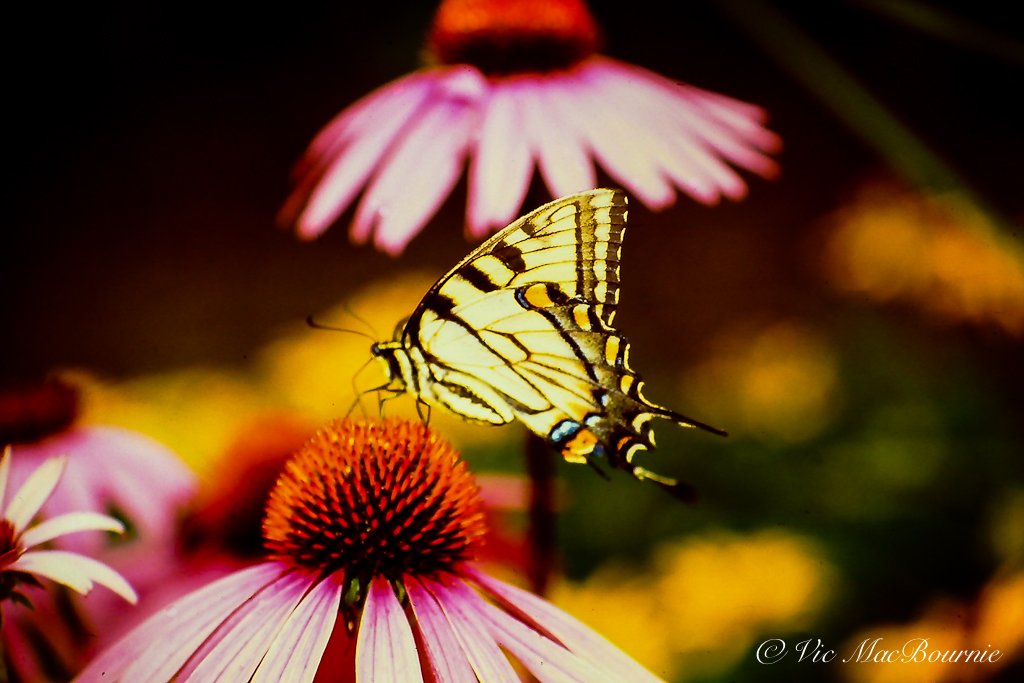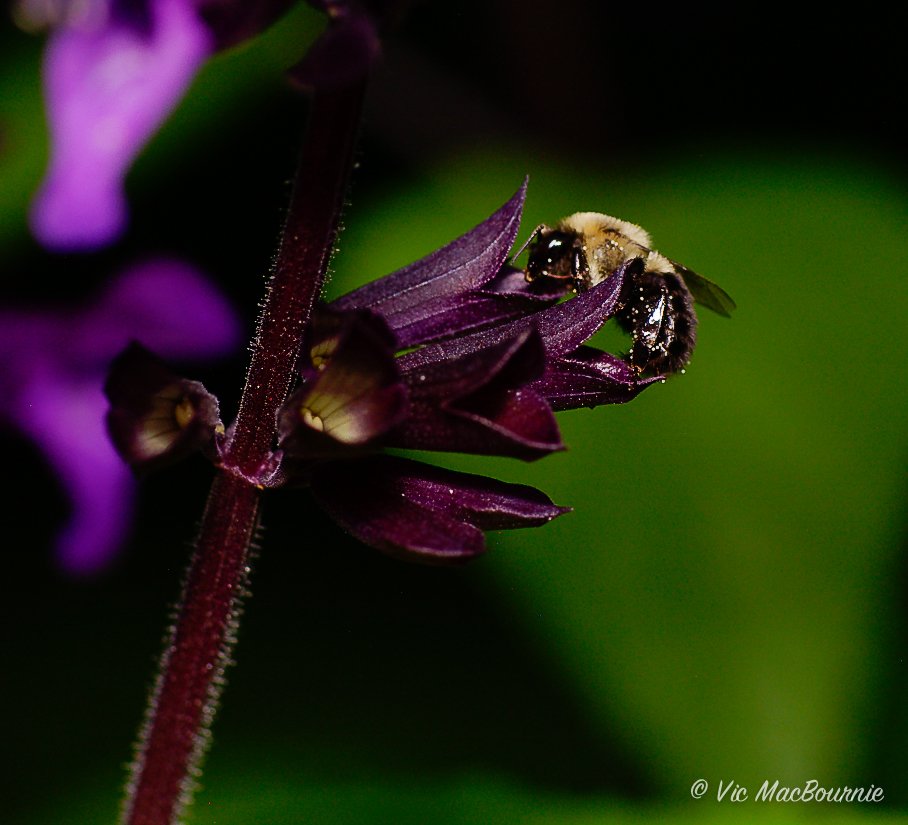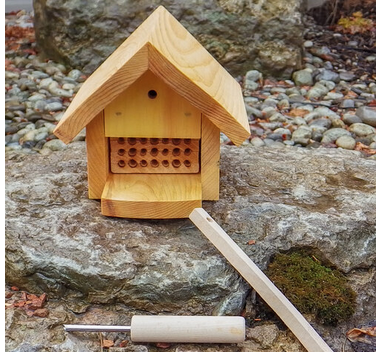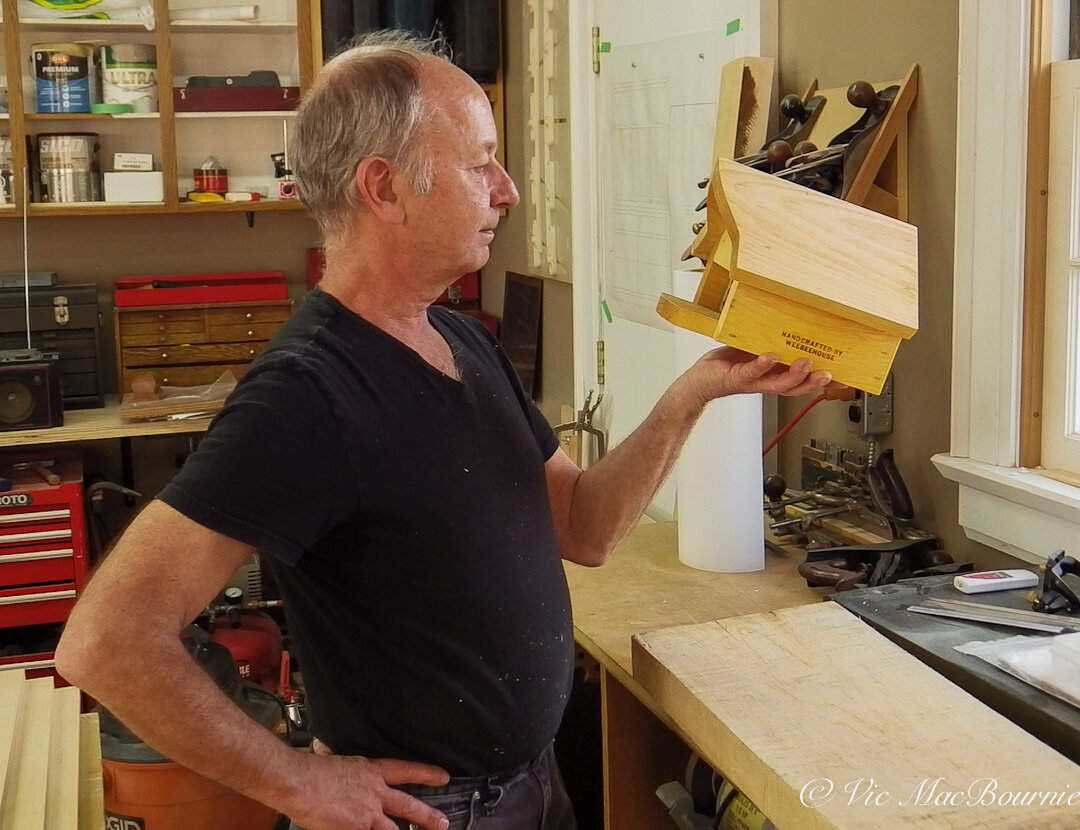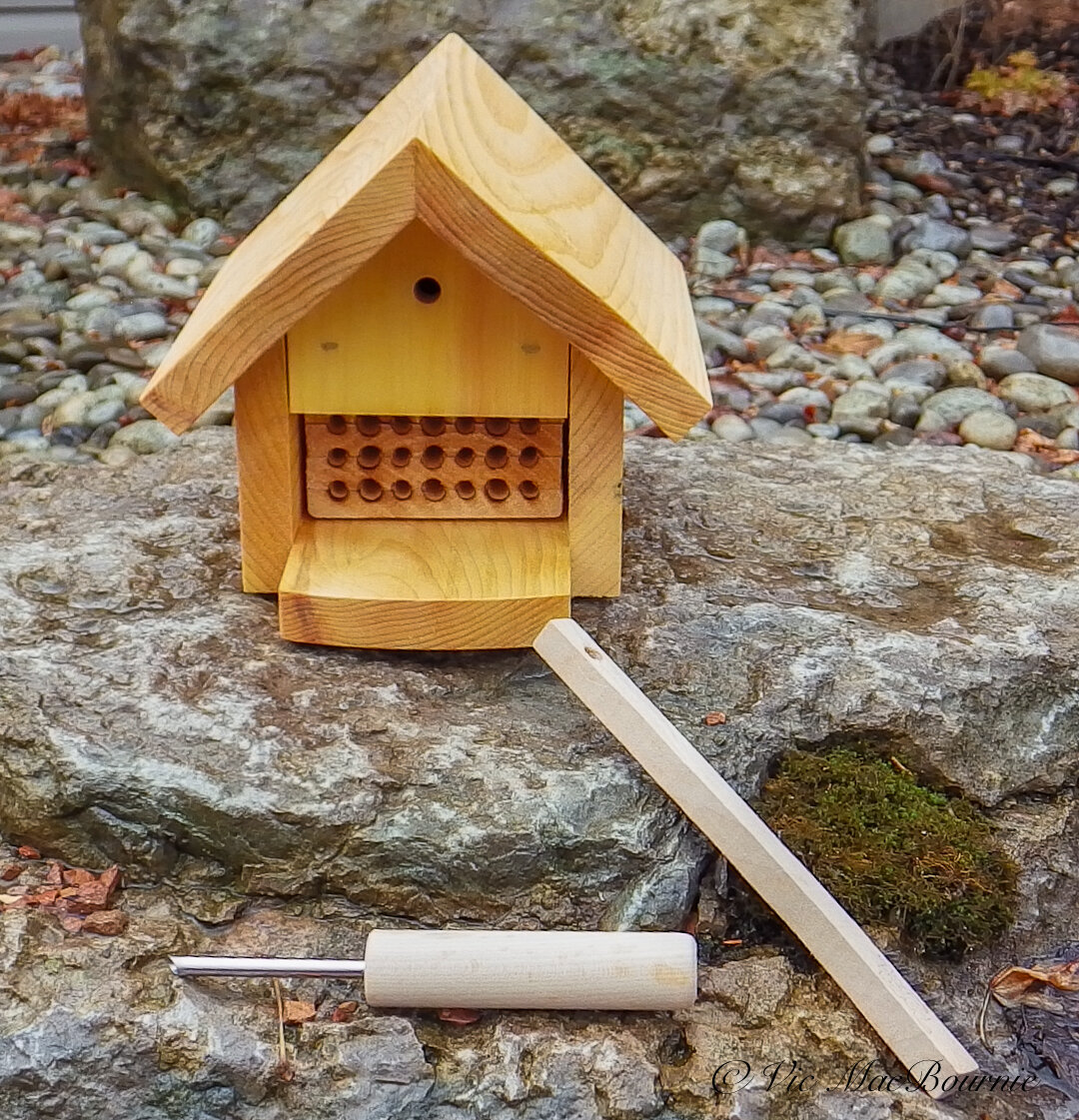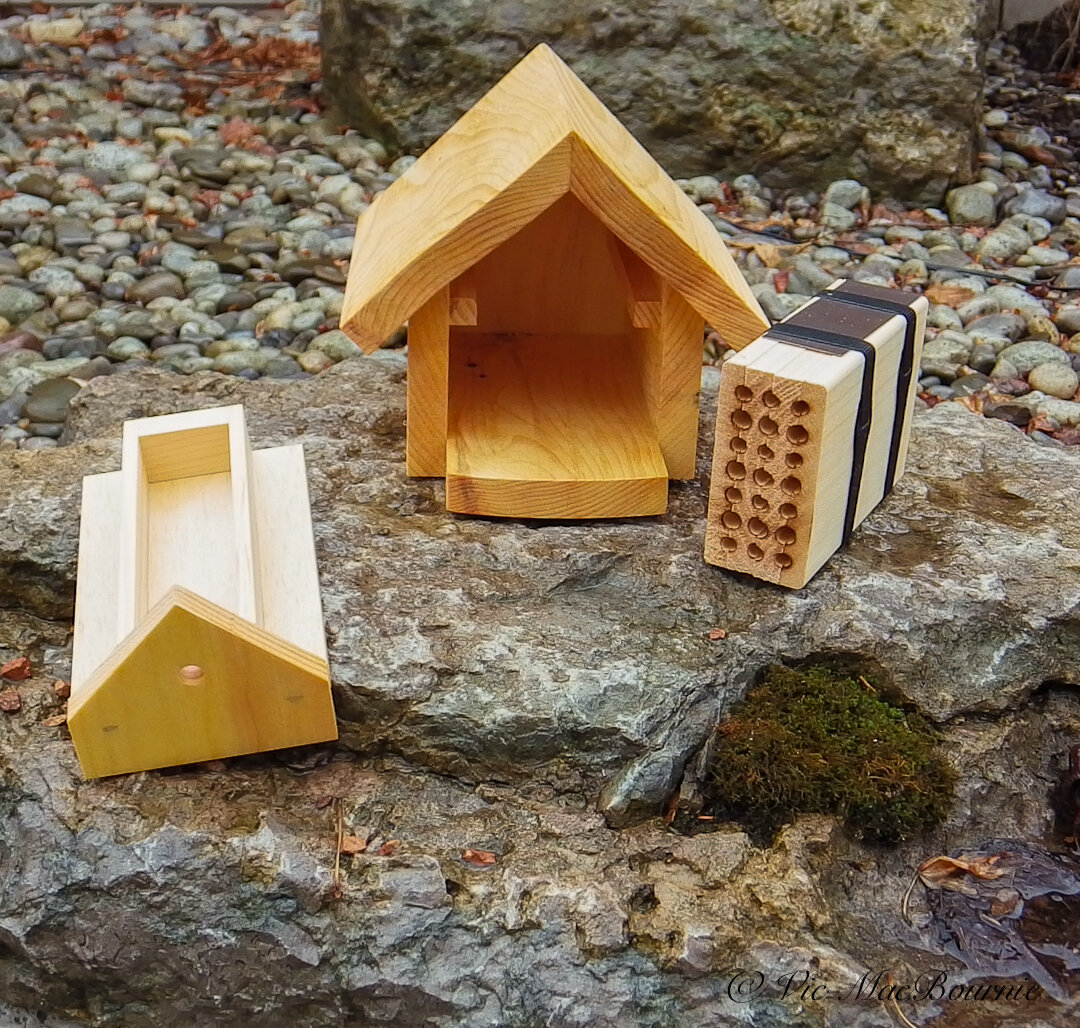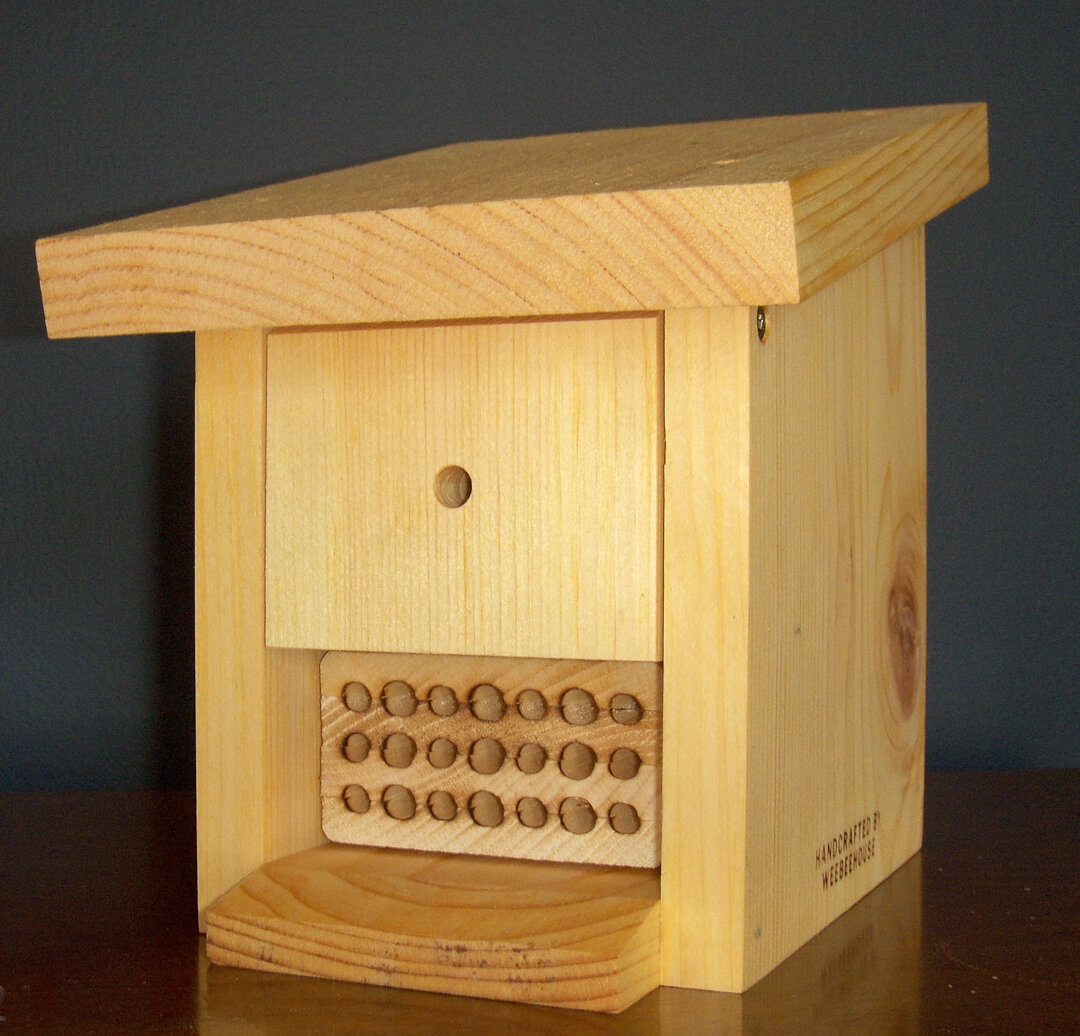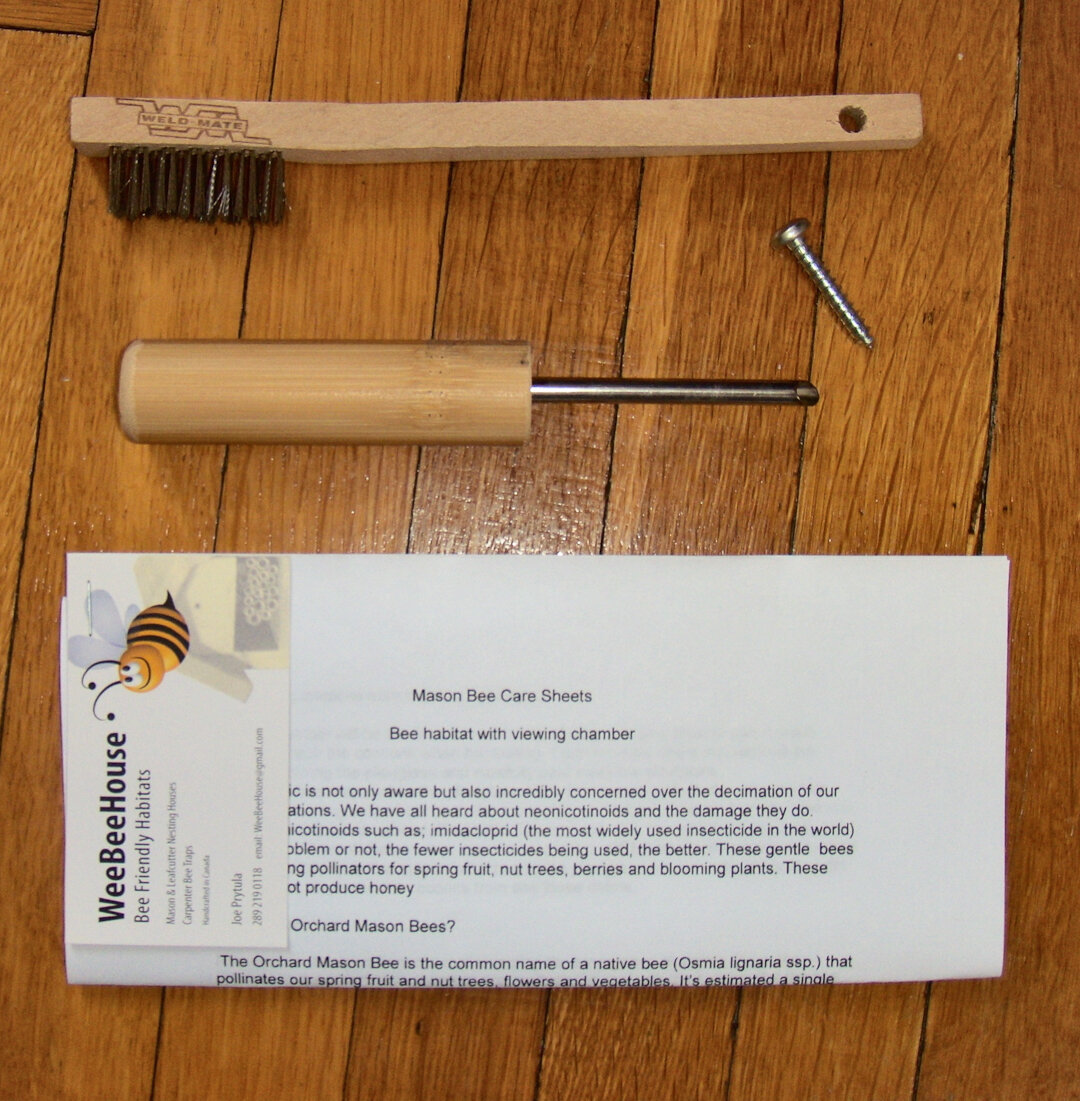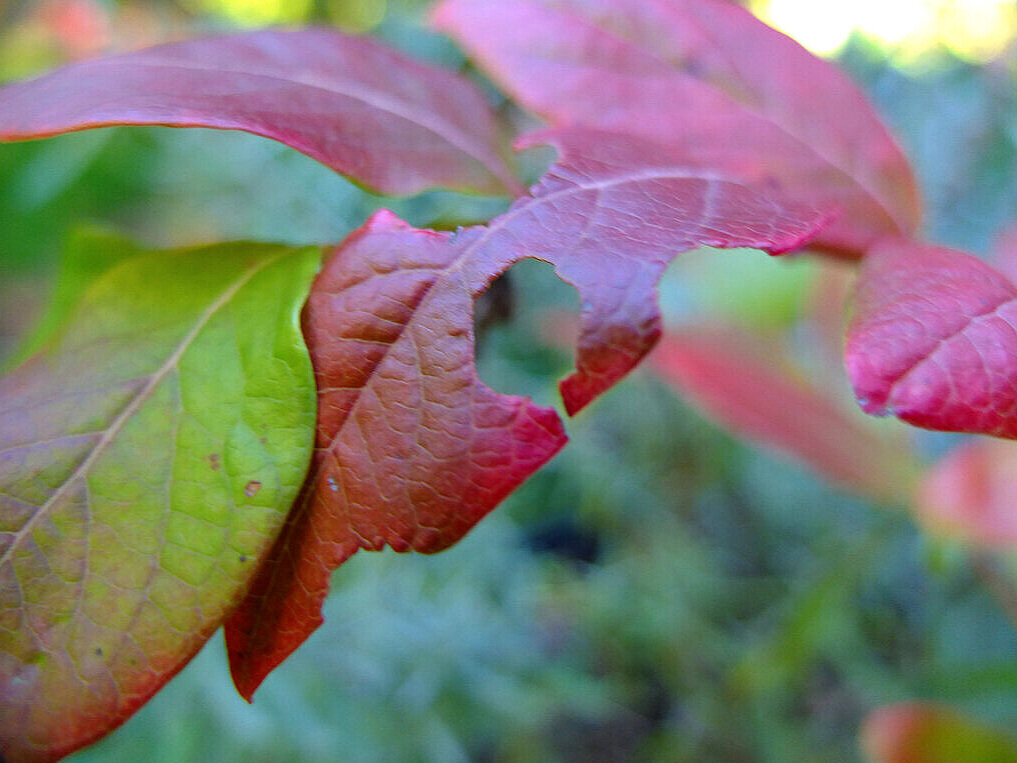Saving our native Humble Bumble Bee
The Bumble Bee needs to be celebrated for the work it does quietly and without a lot of fanfare. You can thank this native bee for the spaghetti sauce on your pasta and the toasted tomato sandwich that you ate for lunch. Unfortunately many of the native bees face an unsure future.
What’s the big buzz about Bumble bees?
Could there be a better bee than our humble Bumble?
A tireless worker that really does not get the credit it deserves. While the non-native honey bee gets the spotlight in the media and just about anywhere climate change comes up, our native Bumble Bee just keeps going about its business and getting the job done.
And quite the job it does.
The Humble Bumble Bee deserves a lot more credit for the work it does in our gardens and agricultural fields.
In case you are not aware, the Bumble bee is the one that brings those juicy tomatoes to your table. In fact, without them, there’s a good chance you wouldn’t be chowing down on that spaghetti or toasted tomato sandwich.
It’s the Bumble bee that is the primary pollinator of tomatoes, not the honey bee.
Why? you may ask.
Bumble bees, unlike honey bees, are capable of buzz pollination. The problem with pollinating tomatoes is the fact that on most flowers the pollen is located out on the end of a stalk on the anthers and easily accessed by most pollinators.
However, explains Paige Embry in her informative book Our Native Bees, “some flowers, including those of tomatoes, hide their pollen inside the anthers so it has to be shaken out. A Bumble bee does this by grabbing the flower in its mouth, curling its body around the anthers and rapidly contracting muscles in its throax, causing vibrations that shake the pollen right out of the tiny holes in the anthers, like shaking salt from a shaker. This activity makes a buzzing noise, and so, buzz pollination.”
So the next time you pick a tomato from your garden, you can thank our humble Bumble Bee.
For more on how we can help save our native bees, check out my story on making a lawn for native bees.
But most tomatoes these days are grown in greenhouses throughout the year. The challenge that faced commercial growers was how to pollinate these tomato plants in a greenhouse, in the winter when there are no Bumble bees around to get the job done.
Going back to 1891, scientists tried to unlock the secret to pollinating tomato plants without the Bumble bee, to very limited success.
Then, according to Embry: “in 1985, Roland de Jonghe a Belgian vet and bee enthusiast put all the bee rearing information together with the fact that a colony of Bumble bees could pollinate a greenhouse full of tomatoes way better than a bunch of people with vibrators or blowers. Since Bumble bee nests only last a few months, people would need new nests every year, and de Jonghe saw the business potential of those Bumble bees. In 1987, he started the first business rearing Bumble bees for commercial use. … By 2004 close to a million colonies of Bumble bees pollinated nearly 100,000 acres of greenhouse tomatoes worldwide, with an estimated value so large that I thought it was a typo accept it was written the same way twice. 12,000 million Euros (about $14 billion) per year.”
Okay, so we now we know the value of our native Bumble bees.
Let’s now take a closer look at these interesting, almost cuddly little creatures with the furry backs.
Do Bumble bees live in hives?
Bumblebees, of the genus Bombus, are common native bees and are important pollinators for many of our woodland wildflowers. Like honeybees, they are social and live in a hive, but one that is the fraction of the size of a honey bee colony – think hundreds rather than thousands.
How many different types of Bumble bees exist?
In the United States alone there are 49 species of these native bees, separated into three different classes depending on the length of their proboscis, or tongue – short, medium, and long. The length of their proboscis will help dictate which species pollinates the various flowers, although some short-tongued Bumble bees have come up with an ingenious way to feed on Long-tube flowers by biting holes in the flowers near the nectar source and feeding through the hole.
Are Bumble bees threatened?
According to the United States Forest Service, Bumblebees have become a conservation issue, resulting from habitat fragmentation caused primarily by human activities, the use of pesticides, as well as disease transmission and the loss of native floral resources.
In the U.S., just in the past few years, two species of Bumblebees have likely gone extinct: Franklin’s bumblebee (Bombus franklini) originally found in a restricted geographic range from southwest Oregon to northwest California; and another species from the eastern United States, which was once found from Canada to North Carolina.
In Ontario alone, there are three at-risk bumble bee species: Rusty-patched (Bombus afinis), Gypsy Cuckoo (Bombus bohemicus) and Yellow-banded (Bombus terricola).
Where do Bumble bees live?
Bumble bees, like most native bees, are primarily ground nesting bees. In spring, the queens begin to emerge from underground where they have spent the winter, and begin to look for a nest site, which can include an already existing but abandoned mouse or rodent burrow.
Bumblebees visit flowers where they feed on the the nectar and pollen. Once their eggs have hatched, they use the plant resources to feed larval worker bees. Unlike honey bees that store large quantities of honey in order to survive winter, Bumble bees may use empty cocoons for short-term storage of nectar.
In a single summer, the Bumble bee queen produces a few generations of workers, which then take over the task of collecting nectar and pollen and help rear the final generation of the colony, which includes queens for the next summer, and males to mate with them.
The colony has all but died out by late fall. All that remains is a few workers and males, as well as the the new queens. These bees burrow into the ground to wait out the cold winter to, once again, begin the process the following spring.
How can we help Bumble bees?
There are reasons you often see native gardeners promoting the practise of leaving your leaves where they fall to help insects and other fauna survive winter.
Well the Bumble bee is a good case in point. Queen Bumble bees overwinter in our gardens in underground burrows and the leaf cover provides protection and helps hold in heat that is vital to their survival.
Check out my earlier post on Why We Need to Leave Our Leaves.
So, in addition to leaving your leaves on the ground in the fall and over the winter, it is also important to provide the native bees with plenty of fall flowers, especially native plants like asters and goldenrods. These late blooming plants are an important food source to enable next year’s queen bees to build up stores of food to last them through the winter in their dormant state.
In addition, refrain from digging up your gardens in early spring to allow the queen bumble bees to leave their underground burrows and begin their new hives.
How to attract Giant Tiger Swallowtail to your garden
The Giant Yellow Tiger Swallowtail is one of the largest butterflies in the United States and Canada. This “generalist” woodland butterfly is able to survive on a number of host plants in the wild and in our gardens. It is certainly among the most beautiful butterflies in our gardens.
If the Monarch is the queen of garden butterflies, the black and yellow Giant Eastern Tiger Swallowtails are surely the kings.
In our garden, Swallowtails are certainly more numerous than Monarchs during the summer. I see them fluttering about checking out our Coneflowers, Black-eyed Susans and any other safe flowering landing spot they can find. Some specimens are just spectacular boasting a wingspan of between 3.1 to 5.5 inches (7.9 to 14 cm).
The Giant Swallowtail is the largest butterfly in Canada and parts of the United States. In Canada, it is only native at the southwestern tip of Ontario but has been seen as far North as Winnipeg, Manitoba. In the north, they are common from May to September. In the eastern United States, the Tiger Swallowtail is one of the most familiar butterflies, but its range stretches from southern Vermont to Florida west to eastern Texas and the Great Plains.
Females are larger than males and Tiger Swallowtails in the south tend to be larger than those in more northern regions.
Male yellow Tiger Swallowtails have four black “tiger stripes” on each of its forewings. The females, which can be yellow or black, have wings with strong, almost florescent, splashes of blue running across the back end of its wings.
Swallowtails, unlike the Monarch butterfly that depends on milkweed as a host plant, are generalists although they like to lay their eggs on citrus trees in the south and the more common Hop tree and Northern Prickly Ash in more northern regions. Gas Plant and common rue (Ruta graveolens) are also two plants that the larvae use as a host plant.
The caterpillar will pupate in early summer into a well camouflaged chrysalis. After about 12 days, the butterfly emerges. A chrysalis that forms in late fall will not hatch until late spring preferring to overwinter in the debris of our gardens.
This is the reason we do NOT clean up our gardens in the fall or early spring.
Farther south in warmer climates, it’s possible to have three successful hatches.
A single green egg is laid on a plant prior to the birth of a small caterpillar. As the caterpillars age they turn green with two black, yellow, and blue eyespots on the thorax.
The caterpillar turns brown prior to pupating. It will reach a length of 5.5 centimetres (2.2 in). The chrysalis varies from a whitish color to dark brown. Hibernation occurs in this stage in locations with cold winter months.
How to attract Eastern Tiger Swallowtails to your garden
Although Swallowtails are primarily woodland butterflies, other common habitats include open fields, rivers, creek beds, roadsides and, of course, our gardens.
Attracting the giant butterflies to your garden is not difficult providing you ensure at least some of the contributing habitat factors – food for all stages of the butterfly from larvae through to adulthood, a source of shallow water or puddle, and some form of shelter such as a woodpile, tall grasses or bushes where they can disappear to at night.
Food for Swallowtail larvae
Both the caterpillars and the butterflies of both the Eastern variety and the Western variety of Tiger swallowtails can be considered generalists, feeding on a wide variety of plants.
Common host plants used are those of the families Magnoliaceae and Rosaceae, with species like the tulip tree (Liriodendron tulipifera), sweet bay magnolia (Magnolia viginiana) and wild black cherry (prunus serotina). Aspens, Alders, birches, cottonwoods and willows are also host plants in more northern regions.
The Spicebush swallowtail is very similar to the black Eastern Tiger Swallowtail, although it is actually mimicking a poisonous Piper Swallowtail.
But, plant a nice sweep of parsley in a quiet corner of your yard and you are instantly on the right track to attract black Swallowtail caterpillars. Parsley is one of the key host plants for the caterpillars that are also happy to dine on fennel, dill, Queen Anne’s lace and other members of the carrot family.
The butterflies themselves are not overly selective on what flower they will land on to get nectar.
Here are a few good choices that will give you bloom throughout the summer. Adult butterflies use a wide range of food sources, most preferring to nectar on plants with red or pink flowers. As mentioned earlier, purple coneflower Salvias and Black-Eyed Susans provide ideal landing areas for the large butterflies to enjoy a meal, but other nectar sources include:
Bee Balm (Monarda)
Blazing Star (Liatris spicata)
Butterfly Weed (Asclepias tuberosa)
Blanket flower (Gaillardia)
Joe-Pye Weed (Eupatorium purpureum)
Penta (Pentas lanceolata)
Garden Phlox (Phlox paniculata)
Why do Swallowtails use puddles?
It is mostly males that gather at puddles either singularly or in numbers. These puddles can be formed in mud or damp gravel and are used by the butterflies to extract sodium ions and amino acids to aid in reproduction.
Females only occasionally puddle and most often are seen alone at the puddle.
In our garden, I like to use a very shallow hanging birdbath as a puddler for butterflies, but you can purchase commercial puddlers to accommodate the butterflies.
You can add some slices of fruit (bananas, oranges) to the shallow puddle to attract even more varieties of butterflies.
How to attract Native Bees to your wildlife garden
It’s time our 4,000 native bee species took centre stage rather than playing second fiddle to European honey bees. In her book Our Native Bees, Paige Embry puts native bees in the spotlight where they belong.
Creating a lawn for native bees: Time to rethink normal
The value of our native bees can’t be underestimated, but every day, every year, every growing season they play second fiddle to those “other” bees.
Their role in the natural world could not be any more clear than their importance to native plants.
(For my article on the important role of native plants, go here.)
In a world where insects and other creepy crawlies get a bad rap, solitary bees are the Rodney Dangerfield of the Bee world.
They certainly don’t deserve that disrespect.
Our Native Bees is a stunningly beautiful book that explores the importance of North America’s endangered pollinators. it is pictured here with a WeeBeeHouse native bee home.
Considering the work native solitary bees do for us, they should actually be celebrated as one of the most important contributors to the natural world and a vital part of our agricultural economy.
Why don’t they get the respect they deserve?
Paige Embry, author of the Our Native Bees book is a true solitary bee aficionado. “It annoys her — rightly — that most people know next to nothing about the 4,000 species of native bees nesting in the ground, in trees and in the sides of our houses,” points out the New York Times, in a review of her book.
“The hardest part of getting a bee lawn into use isn’t developing the seed mix; it’s dealing with people’s vision of what a lawn should be…If we didn’t have to worry about our neighbours, I think there would be a much more diverse look.”
Count me among those who knew “next to nothing about the 4,000 species of native bees.”
I never really gave bees much thought even though the solitary native bees are regulars in our backyard.
After reading her book (Published by nature and garden book publishers Timber Press in 2018) and my own research, I still consider myself a novice when it comes to native bees. There is so much to learn, but Embry’s book is a good beginning for anyone wanting to explore the world of native solitary bees.
Our Native Bees: North America’s Endangered Pollinators and the Fight to Save Them is clear and concise, mixed with entertaining stories and anecdotes about author Embry’s journey into discovering North American native bees from her childhood to present day. The book is by no means a dry, complex, scientific or academic approach to protecting and attracting native bees.
It’s their story and she tells the troubled tale with the novice native bee lover in mind.
“Native bees are the poor stepchildren of the bee world,” she writes in the introduction of the book. Honey bees get all the press – the books, the movie deals – and they aren’t even from around here, coming over from Europe with the early colonists.”
She goes on to point out that in 2015 the U.S. federal government “issued a plan to restore 7 million acres of land for pollinators and more than double the research budget for them.”
Sounds great, where’s this disrespect you talk about?
The disrespect came in the name of the new program: the “National Strategy to Promote the Health of Honey Bees and Other Pollinators.”
As Embry aptly points out: “Four thousand species of native bees, not to mention certain birds, bats, flies, wasps, beetles, moths, and butterflies, reduced to ‘other pollinators.’ ”
It’s the sad tale of our native bees. But with the efforts of Embry, bee researchers and entrepreneurial dreamers who are working hard to help our native bees get the respect and recognition they deserve, there is certainly some reason to be optimistic for the 4,000 species of native bee that call North America home.
No-one is kidding themselves, however, the story of their survival is still being written and there is no guarantee it will have a fairy-tale ending.
Let’s make this clear from the beginning, Embry has nothing against honey bees.
“They dance and make honey and can be carted around by the thousands in convenient boxes, but from a pollination point of view, they aren’t super-bees. On cool, cloudy days when honey bees are home shivering in their hives, many of our native bees are out working over the flowers. Bumble bees do their special buzz pollination of tomatoes, blueberries, and various wild species…. The trusty orchard mason bees are such hard-working yet slovenly little pollen collectors that several hundred can pollinate an acre of apples that requires thousands of honey bees.”
Embry asks: “Where are the book and movie deals for these bees?”
Where indeed?
Our Native Bees book, however, is a good beginning.
The little black, 195-page gem of a book is actually written in two halves: The first half focuses on the commercial importance of native bees in the agricultural world and tells the story behind California’s massive almond industry among others; the second half explores the importance of the native bees in nature and efforts made to save them including an unlikely pairing between the future of native bees and intensive work being done at a U.S. golf course to create ideal habitat for them and other pollinators.
The Power of Bees
In her final chapter of Our Native Bees, Embry writes about the power of these extremely docile native bees. Here are a few excerpts from that chapter:
Bees have power: They have the obvious power of pollination and supplying us with many of our favourite foods. they also have an unexpected superpower – the ability to form connections and build community among people. … People come together to volunteer at bee labs or help with bee surveys. Some use vacation time to take bee classes and hunt for bees.
Bees are reselient: If we just stop kicking the bees quite so hard, we can help them – and see the results immediately. Renounce pesticides. Plant flowers that bees in your area like. Be a little slovenly in the garden; leave some old broken stems and a little bare dirt show. The bees will come.
Bees are diverse: Most people think of honey bees when they hear the word bee or, even worse, they envision a yellow jacket or some other kinds of wasp. Twenty thousand species rife with differences being reduced to either a very unusual outlier of the group or something that is not a member of the group at all.
In the first half of her book, Embry sets up the difference between imported honey bees and our native bees.
For a complete novice, when it comes to the importance of bees and their role in agriculture, I have to admit that the information Embry provided was both enlightening and fascinating.
Embry’s love affair with bees and her subsequent book actually had its roots with the the tomatoes of her Georgia childhood.
“The summertime table in my house always had a plate of sliced tomatoes on it. … When I grew up and moved away, I too, grew tomatoes…, she writes in the book.
“Some pollination happens as a result of wind just shaking the plants, but more and bigger tomatoes result with the help of bees. Not just any bee can do it, though. It wasn’t until I was nearly fifty that I learned that honey bees can’t produce those tasty red and orange globes. Tomatoes require a special kind of pollination called buzz pollination, where a bee holds onto a flower and vibrates certain muscles that shake the pollen right out of the plant.”
“If the idea of flowers growing in the grassy lawn just isn’t quite achievable yet, there’s always the golf course route. Take out some of that lawn and convert it into a home and dining hall for bees. It’s all a matter of rethinking normal.”
So, it turns out that bumble bees and other native bees are the keys to tomato pollination.
Embry goes on to devote an entire chapter to the question: “Did Greenhouse Tomatoes Kill the Last Franklin’s Bumble Bee?”
You’ll have to read the book to get the answer to that question, but it raises a concern about big agriculture and the future of our native bees.
Native versus naturalized bees
In case you were wondering what’s the difference between Native and Naturalized bees, Embry explains it in the following way: “The North American bee is one that evolved right here. The honey bees we know are not native because they came over from Europe with the early colonists. Some of those early bees escaped into the wild (they went feral), where they did quite well. Those feral bees are considered naturalized, not native.”
Native Bees’ economic value
Like many of us, I had not given much thought to how fruit and nuts get to our table and the importance of pollination to that end.
Little did I know that the pollination of massive orchards and fields were so dependent on bees and that non-native honey bees were the key pollinators. All this despite the fact our native bees are more efficient, harder workers and free for the taking if only we could figure out a way of attracting them to acres and acres of endless orchards and agricultural fields.
It should not come as a surprise that the story of our bees, both honey and native bees, are rooted in the agriculture industry and the bees’ future could very well depend on that same industry for good or bad.
Much has been written lately about the future of bees and other pollinators and how their numbers are being threatened by pesticides.
But enough of that. The agricultural story and the work being done behind the scenes is a fascinating part of the native bee story. The fact that Canadians, more specifically New Brusnwick, played a key role in their story, and not in a good way, furthers my interest in the plight of these fascinating little bees.
Native Bees’ value in our gardens
It’s in our gardens, however, where our focus lies.
Native bees have quickly become a favourite of concerned homeowners many of whom are taking actions in an attempt to save them. Even if it’s nothing more than putting up small bee habitats on their properties where the solitary bees can safely procreate and live their lives. (For my post on WeeBeeHouse native bee habitats see below)
Gardener’s Supply Company, in Burlington, Vermont also offers an impressive native bee house for readers looking to begin provding a home for native bees. Their page also includes an interesting video of the bee house in action. To view it, click here.
Best five things I learned from Our Native Bees
1) There are at least 4,000 species of native bees in North America in every shape, size and colour you can imagine.
2) Sweat bees – beautiful green iridescent native bees – get their name because some like to lick up sweat
3) Most native bees are small, live alone and do not sting either because they have no stingers or are so docile that it would take a life and death situation to get them to sting.
4) Native bees vary in size from the mighty carpenter bee (about an inch in length) to the tiny Holeopasites calliopsidis that isn’t much bigger than Roosevelt’s nose on a dime. And it’s not even the smallest native bee in the United States. That honour goes to Perdita Minima.
5) There are 20,000 species of bees worldwide that are responsible for the seeds of rebirth of three-quarters of the flowering plants in the world.
Bees in the Grass: Rethinking Normal
We all have to take a serious look at the acres of grass that dominate our urban and rural neighbourhoods. (For my post on removing lawns see below.)
Embry wastes little time advocating for a change in the way homeowners see their carpets of monoculture they call grass. She uses an example that is both shocking and encouraging.
She turns her focus to golf courses and goes into great detail about two programs at American golf courses that encourage setting aside natural areas on the golf course for native pollinators.
The first program stems from a 2002 report from the Xerces Society for Invertebrate Conservation who teamed up with the U.S. Golf Association to write a report called “Making room for Native Pollinators: How to create Habitat for Pollinator Insects on Golf Courses.”
The second program, and one she turns her attention to, is a program out of Europe, Operation Pollinator, started by Syngenta, one of the world’s largest agrochemical comanies (another name for a pesticide company).
The program started in the United Kingdom in the early 2000s after a survey of golfers revealed that what they liked most about going out for a round of golf was the nature they sometimes stumbled across in the more natural areas of the course. That, together with the desire to reduce the costs of operating a course, lead to the unexpected marriage between nature and a massive pesticide company.
By creating a natural area for pollinators, the pesticide company was able to use their expert biologists to turn perfect turf into pollinator-friendly areas. The plan cut down on the cost of pesticide while at the same time providing more nature for the golfers.
“Operation Pollinator for golf courses came to the United States in 2012, and by 2016 more than 200 golf courses in twenty-nine states had an Operation Pollinator plot. The plots range from half an acre to more than a hundred.”
To say the program has been a smashing success for native bees is a huge understatement.
This program, of course, brings us to our own lawns and gardens.
Embry asks: “What golf courses are doing with Operation Pollinator is going a step beyond just adding some flowers to the grass. They are removing turf in areas that don’t need to be grass and replacing it with flowers for pollinators. That’s one approach, and it works in some places. Sometimes, though, you want a lawn to be a lawn , a place for play, picnics, and soccer pitches. What if a lawn can be all that and a place for pollinators too?”
She goes on to talk about incorporating more clover, and the thirty-seven bee species found on clover in grass in a Minneapolis study.
This simple addition to turf allows for the soccer pitches, while still providing some native bee habitat.
From the simple addition of clover into the lawn Embry moves on to the “making of a bee lawn.”
The transformation from golf-course turf to the perfect bee lawn has been the focus of many studies and creations that has met with varied success over the years.
As one researcher at the University of Minnesota explains: “the hardest part of getting a bee lawn into use isn’t developing the seed mix; it’s dealing with people’s vision of what a lawn should be…"
“If we didn’t have to worry about our neighbours, I think there would be a much more diverse look.”
Embry goes on to explain as a possible solution: “If the idea of flowers growing in the grassy lawn just isn’t quite achievable yet, there’s always the golf course route. Take out some of that lawn and convert it into a home and dining hall for bees. It’s all a matter of rethinking normal.”
Yes, Ms Embry, it certainly is.
Thanks for shedding some light on our native bees.
As an affiliate marketer with Amazon or other marketing companies, I earn money from qualifying purchases.
WeeBeeHouse and tips to attract native solitary bees
Native, solitary bees have a friend in Joe Prytula. His Weebeehouses have been making their lives a whole lot better and beautifying backyard gardens at the same time. Joe decided to use his outstanding carpentry skills to create extremely well-built, high performing and safe homes for our native bees.
Solitary bees have a friend in Joe and his WeeBeeHouse designs
Don’t get Joe Prytula talking about bees, particularly those solitary ones. They’ve literally changed his life and there is nothing he wants to talk about more than his bees, unless of course, it’s his WeeBeeHouse designs.
What makes his bee houses so special?
WeeBeeHouse designs serve as breeding space and sanctuaries for solitary orchard mason bees and leafcutter bees. The high quality, well-made wooden homes are built specifically with the bees’ well being in mind. Unlike most commercial products, these homes can be easily taken apart to be cleaned out and prepared for more bees year after year. There are even cleaning tools and detailed instructions supplied with the house to ensure success.
In fact, it took only about a week before bees found my WeeBeeHouse in our garden and began using filling it with offspring.
Afterall, these artisan, solitary bee houses that have taken up so much of his time since he retired in 2014 after 34 years as a tool and die maker at a Hamilton Ontario area manufacturing facility.
He’s the first to admit “it’s been a labour of love” toiling away in his home workshop, where he’s built hundreds of the custom bee houses for gardeners and nature lovers interested in saving the native bees that prefer to live alone rather than the massive hives associated with honey bees.
Joe Prytula looks over one of his WeeBeeHouse designs in his workshop.
“Most native bees are cavity nesting, looking for existing holes in trees or deteriorating stems of ground plants,” Joe explains.
WeeBeeHouse with cleaning tools that are provided with the purchase of a bee house along with extensive instructions.
“Mason and Leaf cutter bees were original pollinators in North America before honeybees were brought over from Europe,” he explains. “These bees collect pollen only and are three times more efficient at pollinating than honeybees. Their method of pollination results in greater yield per acre. As well some plants can only be pollinated by native bees, tomatoes by bumblebees and apples by mason bees,” says Joe.
The mason bees focus their prolific pollinating skills primarily on fruit and nut trees as well as vegetables in the spring. Leafcutter bees pollinate many of our summer garden vegetables, says Joe.
An exploded view of the WeeBeeHouse showing the bee tunnels where the eggs are planted by the bees as well as the chamber where the beekeeper stores the bee pupae in winter before they fly off.
Woodland gardeners may have noticed perfect circles cut out of the leaves of, say, their native Redbud trees. The culprits would be our leafcutter bees who use the leaf pieces to seal off their nesting cavity.
Joe’s bee houses are designed to serve as breeding space and sanctuaries for solitary orchard mason bees and leafcutter bees. The good news is that these native bees are non-stinging, so they are perfect for gardens with children and pets.
These solitary bees do not make honey and you don’t need the protective gear used to handle traditional honey bees, because these bee species don’t sting. They are simply driven by their need for pollen and nectar to support reproduction through the laying of eggs.
Joe’s Mason and Leafcutter Bee Care Sheets
The public is not only aware but also incredibly concerned over the decimation of our bee populations. We have all heard about neonicotinoids and the damage they are causing to our environment. Whether nicotinoids such as; imidacloprid (the most widely used insecticide in the world) are the problem or not, the fewer insecticides being used, the better. These gentle bees are amazing pollinators for spring fruit, nut trees, berries and blooming plants. These bees do not produce honey
What are Orchard Mason Bees?
The Orchard Mason Bee is the common name of a native bee (Osmia lignaria ssp.) that pollinates our spring fruit and nut trees, flowers and vegetables. It’s estimated a single mason bee may visit approximately 2,000 blossoms a day. The mason bee’s name comes from using mud to seal the egg chambers within a nesting hole. A female mason bee will collect a pollen ball (as a food source for the larva), lay an egg and seal the chamber with mud, usually laying six eggs to a chamber. They are the first bee to hatch in the season usually in late March to early April.
These bees wake to the warmth of the early morning sun, and will pollinate until day’s end. This bee is non-social which means it does not live in a hive. In the wild, mason bees nest in hollow stems, woodpecker drillings and insect holes found in trees or wood. You will find mason bees active in your yard until early summer at which time they have laid a new bee for the following season.
Mason bees are known as gentle bees and can be observed at close range. They rarely sting (the males have no stinger) and when they do it is similar to a mosquito bite.
What do they pollinate?
These bees are perfect for spring fruit and nut trees, blueberries, and virtually all flowers in your yard needing pollination.
What are Leafcutter Bees?
Complete instructions and cleaning tools are included with all of Joe’s Weebeehouses.
The leafcutter bees are a useful friend to gardeners as they provide valuable and efficient pollination for plants such as your summer vegetable gardens.
The leafcutter bee is a smaller bee than the mason bee but just as gentle and as hard working.
They tend to hatch out of their cocoons in mid to late July, being cued to do so by heat and daylight hours.
The leafcutter bee is a cavity dwelling bee, so she lays her eggs in existing holes. She does not create holes or damage structures to make holes.
Leafcutter bees stay close to home, foraging for pollen and nectar within 100m of the nest. Like mason bees, these bees are cavity nesting and need ready-made nests such as soft rotting wood, pithy plants stems like roses or man-made tubes.
Once a suitable home is found, the leafcutter bee will build its nest using a piece of leaf for lining, which they will use to make a cylindrical cavity that looks like a cigar. Leafcutter bees will cause crescent or almost circular shaped hole in a leaf. This damage does not harm the plant. Like mason bees, these bees are gentle and observed without the fear of being stung.
Native bee life cycle
The life cycle of native bees begins with the male and female emerging from their nests and mating. Soon after, the male dies and the female is left to find a suitable nest. She gets busy collecting pollen and nectar to make a specialized “bee bread” that will be eventually used to feed her young. The female deposits one egg on the bee bread, seals the chamber and repeats the process until she runs out of eggs. After laying the eggs, she dies. Her offspring will remain in the nest for about eleven months, where they pass through the egg, larva and pupa stages before emerging as adults.
A Redbud leaf with parts of it cut out by a solitary leafcutter bee.
“These bees collect pollen only and are three times more efficient at pollinating than honeybees. Their method of pollination results in greater yield per acre.”
How to attract native bees
• Grow a variety of pollinator-friendly native wildflowers throughout spring, summer and fall to provide plenty of nectar and pollen the bees need to feed their young.
• Ensure access to nesting materials such as moist soil for mason bees and leafy plants such as Redbud trees, roses and lilacs for leafcutter bees.
• Do not remove dead flower or woody stems that the bees use for hibernation and egg laying.
• Install a WeeBeeHouse
It should come as no surprise that the honeybee population in North America is being decimated from chemicals, making the protection of native bees important to ensure pollination continues. The vast percentage of food we eat, explains Joe, depends on pollination directly or indirectly.
In fact, Joe explains, pollination is essential for humans to exist. “If we lose bees, we’ll die.”
Joe hasn’t always been the bee house guy.
He and his wife, Linda, own an 1875 Italianate style home in the historic section of Thorold (near St. Catharines and not far from Niagara Falls) surrounded by many Century Homes. He honed his outstanding woodworking skills through their loving restoration of the home.
It just so happens that the couple also share a love for gardening and the introduction to native bees has changed their way of thinking when it comes to planning their gardens.
However, the path from fine woodworking skills to WeeBeeHouses wasn’t a direct one. He actually started by trying to save our feathered friends, namely bluebirds and wrens.
The decision to use his woodworking skills to create products for gardeners and bird lovers came as a result of a failed business relationship with a local garden supply business in 2014 to build and supply Wren and Bluebird houses as well as Bluebird feeders.
The volume proved too low to make the project profitable, however, the building of nesting habitat for native bees showed promise.
“I was given parameters to design around and came up with two designs,” he explains. “To my surprise orders took off with about 225 units sold between January and April, 2015. The second season saw a similar amount sold,” he says.
But it was around this time that he began feeling too much pressure to supply under tight timelines, explains Joe. Afterall, he was officially retired and wasn’t looking for a full-time job. Asking for more lead time proved fruitless so he was left with the decision to end that relationship. Before long, he was on his own and working local craft shows.
And WeeBeeHouses was born.
He currently offers four different designs. He likes to make them in batches of 40. Many of the parts are interchangeable fixtures to make the various components of the houses, which helps him construct them more efficiently. He estimates 40 WeeBeeHouses requires him to work four to five hours a day for about two weeks.
Perfect for a retired guy to give he and his wife some alone time to pursue their other loves.
The pandemic has pretty well killed sales, says Joe, who relied heavily on selling at outdoor events and events aimed at eco-friendly consumers.
He ships the units through Canada Post pretty much anywhere in the world people want them. He has shipped several units more recently to the United States where the threat to native bees has become an important issue confronting agricultural activities.
So what makes his houses so special?
Commercially available units usually have reeds or cardboard tubes which should be replaced after each season, he explains. “This information is not shared with the buyer, nor are replacement tubes available to purchase,” says Joe. The result can mean death for the young bees in the chambers.
“The lack of maintenance information (from commercial units) is another concern” says Joe. These bees are being asked to live in an environment that is similar to living in an apartment building. In the wild they are scattered and rarely use the same nesting cavity,”
Although the solitary bees have predators, they are able to survive quite well on their own. However, in a bee house that uses tubes or reeds, pollen mites brought back to the nesting site will thrive in this type of environment, explains Joe.
“They will feed on the pollen left for the eggs. Eventually the nesting site will become a Death Chamber,” he says.
After much research, Joe began to use stackable nesting trays which can be easily cleaned each season to ensure an ongoing healthy environment for his bees.
He is also careful to provide detailed instruction procedure sheets for harvesting and cleaning his bee houses.
Joe is always tweaking his designs to perfect his houses both for the bees and to improve construction of the impressive houses.
In fact he is just completing a prototype that will be tested this season. So far, the new style is only on paper right now. The nesting cavity diameters will range in size from 1/8"-3/8" and the goal is to attract a more diverse population of other cavity nesting pollinators.
The four styles he currently offers are : Observation Style, Barn, Villa, Starter.
If you are interested in purchasing one of Joe’s WeebeeHouses, you can either contact him through his instagram account @weebeehouse or by email at weebeehouse@gmail.com Be sure to use the code Fernsfeathers10 to receive a 10 per cent discount.
This page contains affiliate links. If you purchase a product through one of them, I will receive a commission (at no additional cost to you) I try to only endorse products I have either used, have complete confidence in, or have experience with the manufacturer. Thank you for your support.







